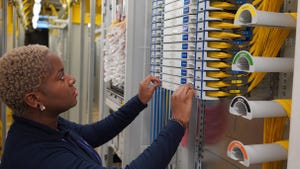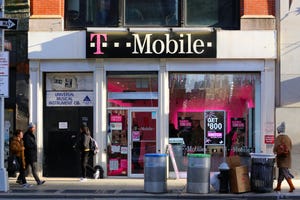
DragonWave Inc. (AIM/Toronto: DWI; Nasdaq: DRWI) has developed a faster microwave radio link to connect wireless carrier networks to the Internet in anticipation of heavier data loads from the growing number of "smart" consumer mobile devices.
The microwave backhaul equipment vendor supplies radio products -- rather than fiber- or copper-based systems -- to connect a carrier's radio access network (RAN) to the wired Internet and the carrier's core network systems. Recently it expanded its portfolio with the acquisition of Nokia Networks 's microwave transport business. (See DragonWave Closes NSN Deal and DragonWave to Buy NSN Unit.)
DragonWave is unveiling its first 2048 QAM radios on Monday, having tested the multi-megabit links in Odessa, Ukraine with operator Intertelecom. QAM, or Quadrature Amplitude Modulation, is a complex grid-based modulation scheme for improving the spectral efficiency of digital radio transmissions.
In fact, DragonWave is claiming that the new radio technology can offer speeds of 550 Mbit/s on its existing Horizon Compact+ product. "We can get 30 to 40 percent more capacity out of the same amount of spectrum," claims Greg Friesen, VP of product management at DragonWave.
DragonWave also includes so-called "Hitless Automatic Adaptive Modulation" technology to deal with QAM's little problem with rain: High-speed QAM links don't typically deal well with a rainstorm (or worse meteorological conditions), so the DragonWave system automatically reduces the speed when in wet conditions so that the connection doesn't drop all together.
"A worst-case scenario storm could take you down to 70 Mbit/s," Friesen says.
The updated QAM radio technology is a software upgrade for DragonWave's Horizon radios. It will start shipping next month.
Friesen says the vendor is targeting carriers worldwide that already have microwave backhaul networks and those that can't get access to fiber for new 3G and 4G builds. "Where the carriers and operators have fiber, they'll use fiber. Where they don't they'll use our system," he says, optimistically.
Why this matters
Users connected to 3G and 4G networks are buying more data-hungry devices that constantly connect to the Internet, so slow backhaul can often be the bottleneck in a mobile network's performance.
At the same time, carriers around the world are screaming about a lack of spectrum, with backhaul connections being especially expensive, so any technology that can help boost backhaul capacity on existing spectrum is likely to attract operator attention. (See iPhone 5 Could Cause Local Data Crunches in US.)
For more
Small Cells Among Next Big Challenges for LTE
Small Cell Backhaul Options Are Wide Open
LR Live: Wireless Fiber Demand Fuels New Options
Trends of IP Microwave
— Dan Jones, Site Editor, Light Reading Mobile
About the Author(s)
You May Also Like




.jpg?width=300&auto=webp&quality=80&disable=upscale)







